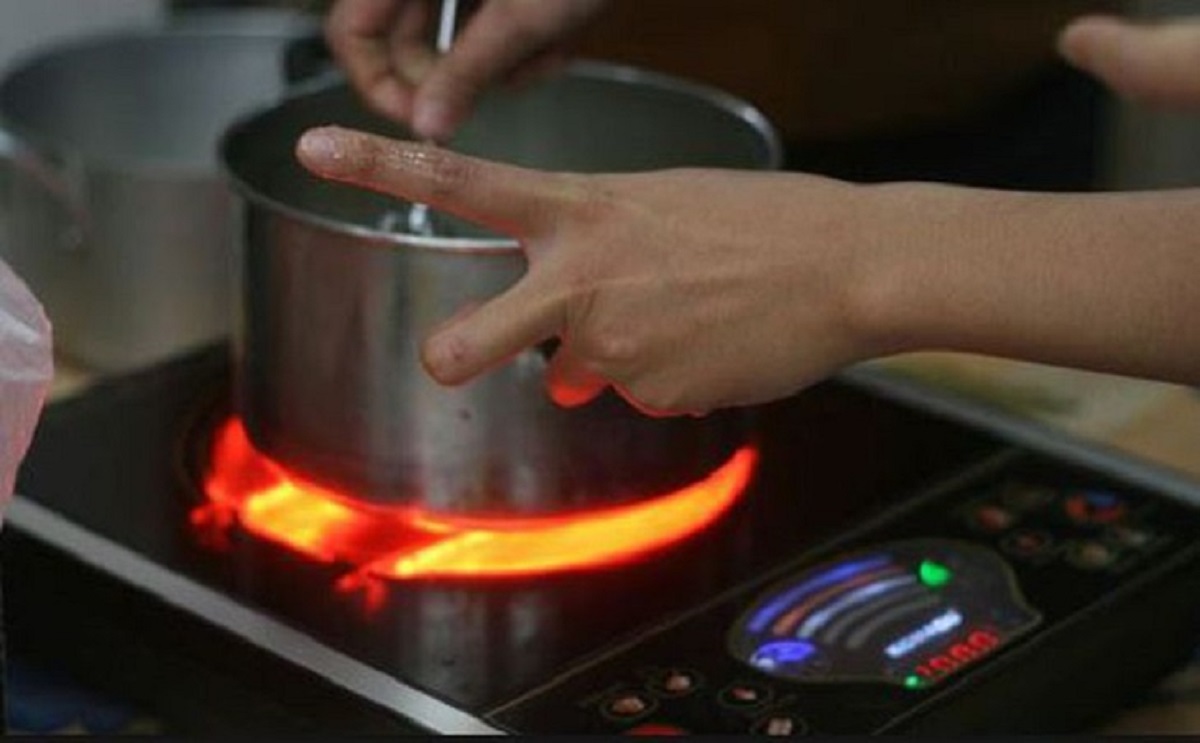What’s the Difference Between an Induction Cooktop and an Infrared Cooktop?

Infrared cooktops, on the other hand, are a type of electric cooktop that works by converting electrical energy into heat energy, which then heats up the pots and pans used for cooking. Specifically, infrared cooktops are constructed with heating coils placed beneath a heat-resistant glass-ceramic cooktop. When the cooktop is turned on, an electric current passes through the heating coils, causing them to heat up, glow, and generate a significant amount of heat that is transferred to the cooktop’s surface and heats the bottom of the pots and pans.
Comparing the Pros and Cons of Induction and Infrared Cooktops
Even though both are electric cooktops, induction and infrared cooktops have certain differences, as outlined below:
| Infrared Cooktop | Induction Cooktop | ||
| Pros |
– No specific pot or pan requirements; any type can be used. – Affordable pricing, suitable for all households. – Offers a variety of cooking functions. |
Pros |
– Cooktop surface made of premium ceramic glass with excellent heat resistance. – Multiple cooking functions, including timer and auto-lock features. – Up to 90% cooking efficiency as it doesn’t need to heat the cooktop surface, resulting in faster cooking times. – Easy-to-clean cooktop surface. |
| Cons |
– High heat generation can lead to a shorter lifespan due to the heating of the cooktop surface. – Slower heating of pots, pans, and food compared to induction cooktops. – Cooking efficiency of only 65-70% due to the need to heat the cooktop surface before cooking. |
Cons |
– Higher price tag compared to infrared cooktops. – Requires pots and pans with magnetic bases to work with the induction cooktop. |
Which Cooktop is More Energy Efficient: Infrared or Induction?
From the comparisons above, it’s evident that induction cooktops offer superior durability and longevity compared to infrared cooktops. Induction cooktops are crafted from premium materials, boast excellent heat resistance, and are safe for users. Additionally, the use of electromagnetic fields to heat pots and pans results in incredibly fast cooking times, without generating excess heat like gas stoves. This makes cooking more comfortable and enjoyable than ever before.

Infrared cooktops, on the other hand, use electrical energy to heat the heating coils, causing them to become extremely hot and capable of heating pots and pans during cooking. However, the continuous heating of these coils can lead to a gradual decrease in their durability over time, which also impacts the safety of the cooktop. Some German-made infrared cooktops have addressed this issue by replacing the heating coils with steel sheets to enhance durability and cooking performance.

Based on the operating principles of these two types of cooktops, it’s clear that induction cooktops offer quicker and more convenient food heating compared to infrared cooktops. This efficiency also translates to lower electricity consumption, as infrared cooktops require additional energy to heat the heating coils before they can generate heat to warm pots and pans for cooking.

In fact, some experiments have demonstrated the impressive energy-saving capabilities of induction cooktops. While an infrared cooktop takes over four minutes to boil a liter of water, an induction cooktop accomplishes the same task in just two minutes. This efficiency is due to the minimal heat loss of less than 10%, which allows induction cooktops to heat food rapidly and retain heat for extended periods.
The Glass Pot Lives On: Reviving Your Glass Cookware for Induction Stoves
Introducing the versatile and efficient solution for your kitchen – the glass pot! While it may not work directly on an induction cooktop, it’s not a problem if you have one in your kitchen. Simply use an induction cooker mat made of stainless steel, also known as an induction heat diffuser, and you’re all set to cook up a storm. It’s the perfect blend of functionality and style, ensuring you can create delicious meals with ease.
The Ultimate Guide to Removing Stubborn Stains from Your Electric Stove: A Surprising Hack
Introducing the Ultimate Guide to Stain Removal on Electric Stoves: Uncover the Secret to Sparkling Surfaces with Just One Surprising Tool!
Stay tuned to discover the ingenious method that will revolutionize the way you clean your electric stove, erasing those stubborn stains for good. This game-changing technique will be your new go-to, ensuring a spotless and sparkling stove top that’s sure to impress.







































